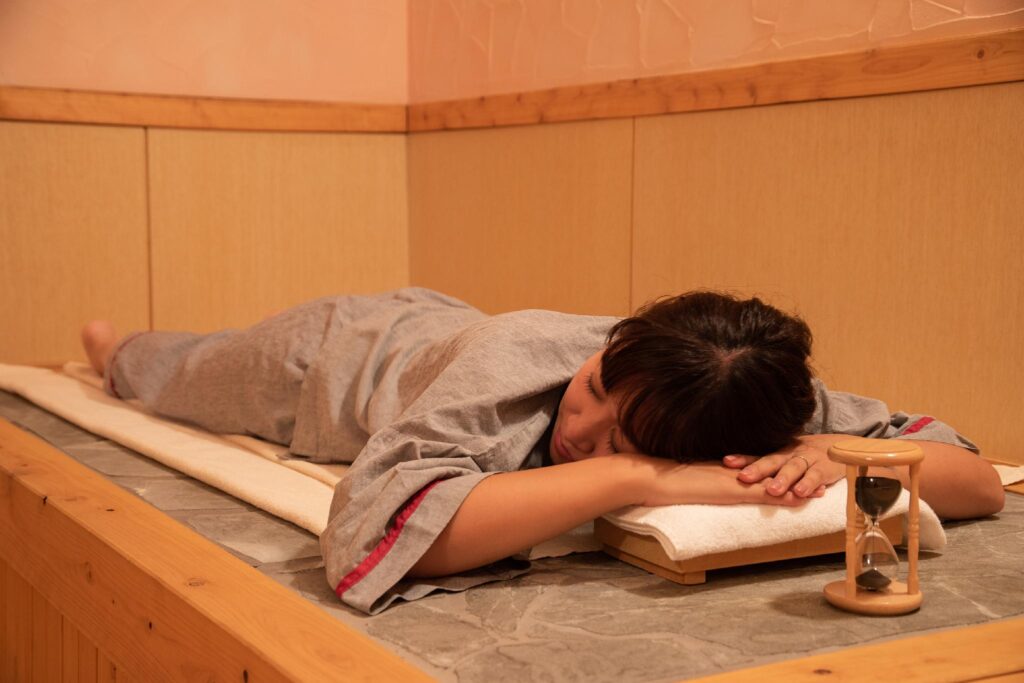Mike Chang-” Why I stop sleeping on beds and go to the floor instead?” Why do Koreans sleep on the floor? | How Koreans can sleep on the floor even in severe winter weather.
Understanding the Korean Tradition of Sleeping on the Floor

In South Korea, sleeping on the floor is a centuries-old tradition. This cultural habit is deeply rooted in history, practicality, and social norms. Below, we explore the reasons behind this unique sleeping arrangement, its benefits, and how it fits into modern Korean life.
Historical Context
- Cultural Heritage: The practice of sleeping on the floor in Korea dates back hundreds of years. Historically, it was common across all social classes, from emperors to commoners. This tradition has persisted despite the influence of Western lifestyles in recent decades.
- The Ondol System: One of the primary reasons Koreans sleep on the floor is due to the ondol, a traditional underfloor heating system. This method uses smoke from a fireplace to warm stones beneath the floor, creating a cozy environment during cold winters. The heat rises from the ground, making it comfortable to sit and sleep on the floor.
Practical Reasons
- Space Efficiency: Many Korean homes are relatively small due to high population density. Sleeping on the floor saves space compared to traditional Western beds. When not in use, mattresses can be rolled up and stored away, freeing up living space for other activities.
- Comfort and Cleanliness: Koreans prioritize cleanliness and hygiene. Shoes are removed before entering homes, ensuring that floors remain clean. The practice of sitting and sleeping on the floor is considered hygienic in this context. Additionally, many find sleeping on a firm surface more comfortable for their bodies.
Health Benefits
- Posture and Alignment: Sleeping on a firm surface can promote better spinal alignment. This can alleviate back and neck pain by encouraging proper posture during sleep.
- Improved Circulation: Floor sleeping helps distribute body weight evenly, which can enhance blood circulation. This may lead to better overall health and reduced discomfort during sleep.
- Temperature Regulation: For those who tend to overheat at night, sleeping on the floor can provide cooler temperatures compared to traditional beds. This can lead to more restful sleep without interruptions.
Modern Adaptations
- Changing Trends: While many Koreans still prefer sleeping on the floor, Western-style beds have become more common in urban areas. Wealthier households often have larger beds as a status symbol or for comfort. However, older generations often continue to sleep on the floor as it is deeply ingrained in their lifestyle.
- Cultural Activities: In addition to sleeping, many daily activities in Korea are performed on the floor—eating meals, socializing, and even working or studying. This “floor culture” fosters a sense of community and intimacy among family members and friends.
What are the health benefits of sleeping on the floor?
Sleeping on the floor presents several potential health benefits, including relief from back pain, improved posture, better temperature regulation, and enhanced blood circulation. However, personal comfort and individual health considerations should guide one’s decision about adopting this practice. As with any lifestyle change, it’s advisable to listen to your body and consult with healthcare professionals if needed before making significant adjustments to your sleep habits.
Health Benefits of Sleeping on the Floor
Sleeping on the floor has gained attention for its potential health benefits, especially among those seeking relief from back pain and improved posture. While this practice may seem unconventional to some, it is rooted in tradition and offers various advantages. Below are some key health benefits associated with sleeping on the floor.
Relief from Back Pain
- Firm Support: One of the most cited benefits of sleeping on the floor is its ability to alleviate back pain. A firm surface can provide better support for the spine compared to soft mattresses, which may allow the body to sink in and misalign the spine. This firm support can help maintain a neutral spine position, reducing discomfort and pain over time.
- Improvement in Spinal Alignment: Sleeping on a hard surface encourages proper spinal alignment, which is crucial for reducing strain on back muscles and ligaments. This can be particularly beneficial for individuals suffering from chronic back issues or conditions like sciatica, where a firmer surface may prevent further aggravation of symptoms.
Enhanced Posture
- Promotes Natural Alignment: A firm sleeping surface helps keep the spine straight, which can improve overall posture. Poor posture often leads to various health issues, including muscle strain and joint pain. By sleeping on the floor, individuals may find that their posture improves over time as their spine remains aligned during sleep.
- Reduced Risk of Misalignment: Soft mattresses can cause the body to sink, leading to misalignment of the spine and pelvis. In contrast, sleeping on a flat surface helps maintain natural spinal curvature, promoting better posture during waking hours.
Temperature Regulation
- Cooler Sleep Environment: Sleeping closer to the ground can help regulate body temperature more effectively than traditional mattresses. Since heat rises, sleeping on the floor may prevent overheating during the night, allowing for a more comfortable sleep experience.
- Reduced Night Sweats: For individuals who tend to sweat at night or experience hot flashes, sleeping on a cooler surface can help mitigate these issues by allowing heat to dissipate more easily.
Improved Blood Circulation
- Even Weight Distribution: Sleeping on a firm surface allows for better distribution of body weight, which can enhance blood circulation. Improved circulation is essential for overall health as it ensures that vital nutrients and oxygen reach various parts of the body effectively.
- Potential Muscle Strengthening: Some proponents of floor sleeping suggest that it may promote muscle activity during sleep, potentially contributing to muscle strengthening over time due to the need for stabilization.
Cost-Effective Solution
- Affordability: Sleeping on the floor eliminates the need for an expensive mattress or bed frame, making it a cost-effective option for many people. This simplicity appeals to those looking for practical solutions without financial strain.
Considerations and Cautions
While there are numerous benefits associated with sleeping on the floor, it is essential to consider individual circumstances:
- Comfort Levels: Not everyone will find sleeping directly on the floor comfortable. Some may experience increased pressure points leading to discomfort in areas like hips or shoulders.
- Health Conditions: Individuals with certain health conditions (e.g., arthritis, mobility issues) should consult with a healthcare provider before making this change, as sleeping on a hard surface could exacerbate their conditions or lead to difficulty getting up from the floor.
- Gradual Transition: For those new to floor sleeping, it may be helpful to transition gradually by starting with a thin mat or blanket before fully committing to sleeping directly on the floor.
How do Koreans keep their floors clean and hygienic?
Koreans have developed a strong culture of cleanliness, particularly when it comes to maintaining hygienic living environments. This emphasis on cleanliness is reflected in various practices that ensure their floors remain clean and free of dirt and germs. Here’s how Koreans keep their floors clean and hygienic:
Shoes Off Indoors
- Cultural Norm: One of the most significant practices in Korean households is the removal of shoes before entering the home. This custom helps prevent dirt and contaminants from being tracked indoors. Guests are often provided with slippers to wear inside, which further minimizes the introduction of outside dirt.
- Designated Areas: Many homes have a designated area near the entrance where shoes can be removed. This area is often equipped with shoe racks or mats to keep the space organized and clean.
Regular Cleaning Routines
- Daily Sweeping and Mopping: Koreans typically engage in daily cleaning routines that include sweeping and mopping floors. This regular maintenance helps to remove dust, dirt, and allergens that accumulate over time.
- Use of Traditional Tools: Many households use traditional cleaning tools such as brooms made from natural materials, which are effective for sweeping up fine dust. Mops are often used with water or mild cleaning solutions to maintain hygiene.
Floor Materials and Maintenance
- Floor Types: Korean homes often feature hardwood or tiled floors, which are easier to clean compared to carpets. These materials can be wiped down regularly without the risk of trapping dust and allergens, making them more hygienic options.
- Specialized Cleaners: Koreans may use specific floor cleaners designed for their flooring type, ensuring that surfaces are not only clean but also protected from damage.
Innovative Cleaning Practices
- Umbrella Covers: To combat wet and muddy floors during rainy seasons, many establishments provide plastic umbrella covers at entrances. This prevents water from dripping onto the floors, helping to maintain cleanliness in public spaces.
- Cup Sterilizers in Restaurants: In dining establishments, cup sterilizers are commonly used to ensure that drinking vessels are free from germs before use. This practice reflects the high standards of hygiene maintained in public spaces.
Natural Cleaning Solutions
- Eco-Friendly Products: Many Koreans prefer using natural cleaning solutions like vinegar mixed with water for mopping floors. These alternatives are effective at disinfecting surfaces without the harsh chemicals found in some commercial cleaners.
- Essential Oils: Some households incorporate essential oils into their cleaning routines for added antibacterial properties and pleasant scents, enhancing both cleanliness and ambiance.
Attention to High-Traffic Areas
- Frequent Disinfection: High-traffic areas such as kitchens and bathrooms receive extra attention when it comes to cleaning. These spaces are often disinfected regularly to prevent the spread of germs, especially during illness outbreaks or when food is being prepared.
- Moisture Control: Bathrooms are cleaned frequently due to their susceptibility to mold and bacteria growth caused by humidity.
Community Awareness
- Public Cleanliness Initiatives: In South Korea, there is a strong community awareness regarding cleanliness in public spaces as well. Citizens actively participate in keeping streets and parks clean, reflecting a collective responsibility towards hygiene.
- Education on Hygiene Practices: Schools and community programs often educate individuals about the importance of cleanliness and effective cleaning practices from a young age, instilling these values into daily life.
Conclusion
Sleeping on the floor is more than just a cultural quirk; it reflects a blend of historical practices, practical living arrangements, and health considerations that have shaped Korean society over centuries. As modern influences continue to permeate Korean life, this tradition remains resilient, adapting while still honoring its roots.

